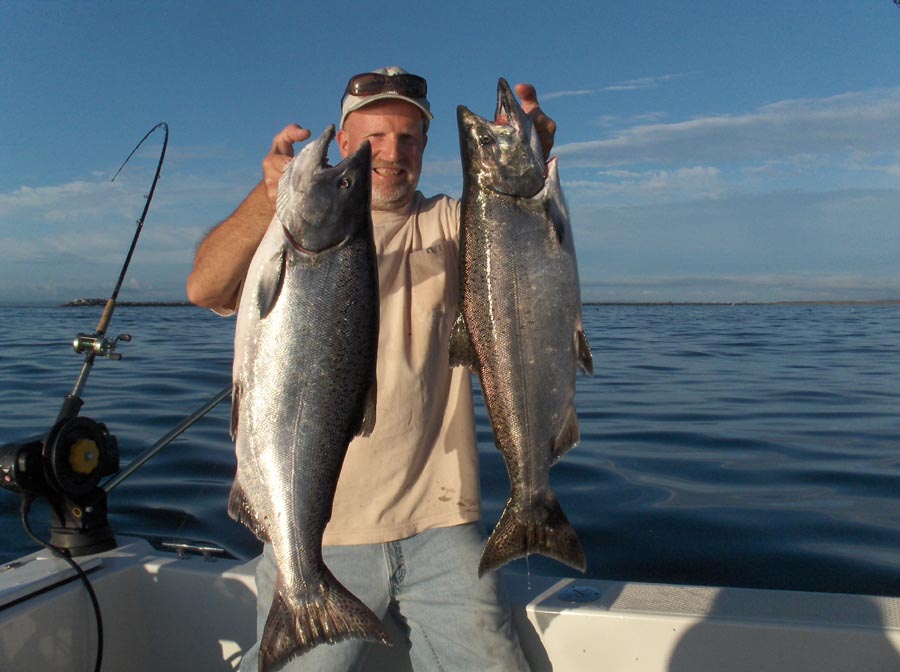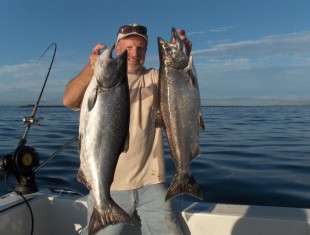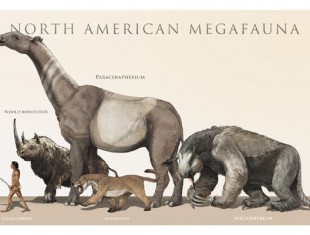
This was the fourth year of the early June hatchery Chinook season at Westport. For two weeks anglers are allowed to keep two hatchery Chinook per day before going to one per day for hatchery or wild plus a hatchery Coho or two for your two salmon limit.
Every early season has been a little different which is quite normal for the ocean. Wind direction and speed, clouds, rain, tides, swell, sun, water temperature, bait fish, sea birds, plankton, algae, jellyfish, razor clam spawn and many other variables affect where and how to catch salmon in the ocean. And all these things can change from day to day or maybe week from week.
On June 14th I went fishing with Tim Zech and his son on their 24-foot Sea Sport. We went south from Westport off the wind mills in 180 feet of water and got skunked. The fishing was good there two weeks before. The northwest wind was blowing, the waves were big, no birds, no bait, no salmon, no whales, it was like a dead sea!
Tim went back six days later to the same spot and everything had changed. The ocean was no longer angry, hardly any wind or waves, lots of birds, lots of bait fish, lots of salmon and a dozen humpback whales feeding in the area putting on a show and coming half way out of the water making huge splashes.
Tim put a 28-pound Chinook in the fish box right off the bat and after releasing five large wild Coho he put a hatchery Coho in the box for his early limit. That’s how fast things can change in the ocean.
Four years ago the early hatchery Chinook fishing was unbelievably good as most boats came in with their limit every day for two weeks. The seas were mostly calm with lots of bait fish, birds and hungry Chinook anywhere from near shore in 20 feet of water out to 100 feet of water and the fishing was great. There were a few days when we had our limit by 8:00 in the morning. We thought we died and went to salmon heaven!
The next year the early season was good but we had to work a little harder to get our fish. The third year we had to work even harder to get our fish. Instead of small schools of anchovies being almost everywhere they were in larger schools near shore probably feeding on razor clam spawn.
We were catching Chinook in 20 feet of water just outside the breakers. If your engine quit while fishing that close to shore you would be in big trouble very fast. Using a diver and a cut-plug herring works very well for ocean Chinook in shallow water.
This year the early hatchery Chinook season started on May 30th. Again I was fishing with Steve Thorniley in his 23-foot Sterling with a V-8 G.M. engine with a Volvo stern drive.
While crossing the Westport bar we had to make a decision to go north or south. We had always gone north on opening day, so north it was. We ran up the beach for about five miles in 75 feet of water and started trolling. It wasn’t long before I had a nice Chinook on, but when I got it near the boat we could see the adipose fin wasn’t clipped so we unhooked the mint bright 15-pound Chinook. Little did we know that would be the last salmon of the day.
We fished in and we fished out, we changed spoons, used bait, we used a flasher and plastic squid but nothing worked. We continued trolling north until we were off Moclips when Steve noticed a rocky mound on the bottom on the depth finder. Not wanting to go fishless we stopped and sent our herring to the bottom in 120 feet of water. After filling a five gallon bucket with sea bass and lingcod we called it a day and headed back to the harbor.
Back at the dock the news of the day was go south off the wind mills out in 140 feet of water. So Sunday morning that’s where everyone went. There was like maybe a 100 boats and the fishing was good with lots of boats getting limits, including us.
We went back the next day and caught three more. The next day we went home to process our fish and get them in the freezer. We went back the next day and fished the afternoon incoming tide on the bar and picked-up two nice Chinook, but a big high pressure off the coast was pushing a big northwest wind wiping up the ocean. It can be dangerous fishing in big waves out there, especially for a couple of 60-something-year-old fishermen.
Steve and I have been fishing salmon in the ocean since the early 1970s so we have lot of experience, but it’s more fun when the ocean is calmer and the salmon are more numerous. And that will happen at any time.
So it’s going to be another great salmon season in the ocean!
The lack of anchovies is a bit of a concern this year off Westport, but that can change any time.
The collapse of sardines along the West Coast is also a concern. For the last 20 years they have been abundant out beyond 250 feet of water. We did catch some salmon with large herring in their stomachs, so there are some of those out there.
Without lots of bait fish the ocean becomes lifeless. Seabirds, sea mammals and all fish larger then bait fish rely on this food source for their livelihood. State and Federal biologists have no idea what the status of bait fish is in the ocean, because it’s just too difficult and costly to pursue such a mission.


